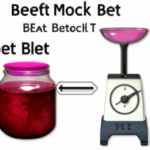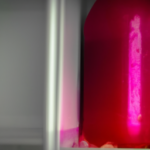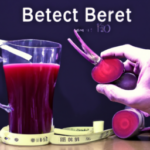Juice Tips and Tricks
How Long Can Beet Juice Stay In The Fridge
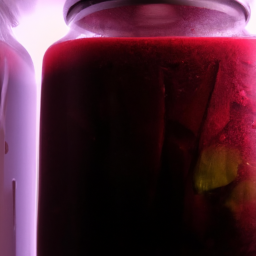
Beet juice is gaining popularity as a beverage due to its delicious taste and health benefits. However, there is often confusion regarding how long beet juice can be kept in the refrigerator before it goes bad.
As someone who loves to indulge in this refreshing drink, I decided to do some research and find out the truth about the shelf life of beet juice. The answer may surprise you! I discovered that fresh beet juice typically lasts about 3-5 days in the refrigerator if stored properly. However, when it comes to store-bought varieties, **how long does bottled juice last** depends on whether it’s pasteurized and unopened; in that case, it can often last for several months. Once opened, though, it’s recommended to consume it within a week to maintain its freshness and nutritional value.
While many people assume that beet juice only lasts for a few days in the fridge, the truth is that it can stay fresh for up to a week or more if stored properly. Of course, there are several factors that can affect the shelf life of beet juice, such as the quality of the ingredients, the temperature of your fridge, and the way you store the juice.
In this article, we will explore all of these factors and provide you with tips for extending the shelf life of your beet juice so that you can enjoy it for longer.
Key Takeaways
- Proper storage and handling can prevent the growth of harmful bacteria and other microorganisms that can spoil the juice.
- Storing beet juice in an airtight container in the fridge helps to prevent exposure to air, which can cause spoilage.
- Refrigeration slows down the growth of bacteria that can cause the juice to spoil, keeping it fresh for longer.
- Beet juice can last for up to 5 days in the fridge when vacuum sealed.
The Shelf Life of Beet Juice
You don’t want to risk drinking spoiled beet juice that’s been sitting in your fridge for too long, do ya? Fortunately, there are ways to extend the shelf life of beet juice. Beet juice preservation involves proper storage and handling. The key is to prevent the growth of harmful bacteria and other microorganisms that can spoil the juice.
One way to extend the shelf life of beet juice is to store it in an airtight container in the fridge. This helps to prevent exposure to air, which can cause spoilage. Additionally, it’s important to keep the juice at a consistent temperature. Fluctuations in temperature can lead to the growth of bacteria and mold. By following these simple tips, you can enjoy fresh and healthy beet juice for up to 5-7 days.
Factors that affect the shelf life of beet juice include the freshness of the beets, the cleanliness of the juicer, and the temperature of the storage environment. Let’s take a closer look at these factors and how they can impact the quality and safety of your beet juice.
Factors That Affect the Shelf Life of Beet Juice
When it comes to keeping that vibrant, ruby-colored elixir fresh, the key lies in temperature and air exposure. Factors affecting beet juice shelf life include the juicing method, storage temperature, and container type. The fresher the juice, the more health benefits it offers, so it’s important to take these factors into account.
The juicing method affects the shelf life of beet juice because the faster the juice is extracted, the less time it is exposed to oxygen. This is why cold press juicing is preferred over centrifugal juicing. Storage temperature also plays a significant role in extending the shelf life of beet juice. The colder the temperature, the slower the rate of bacteria growth. Finally, the container type used for storage can affect the shelf life of beet juice. Glass containers are preferred over plastic because they are less likely to react with the juice and leach chemicals into it. It is important to consider these factors to ensure that you get the most out of your beet juice.
To ensure your beet juice stays fresh for as long as possible, it’s important to store it properly.
How to Store Beet Juice
When it comes to storing beet juice, I prefer to use airtight containers to help preserve its freshness.
I always refrigerate my beet juice immediately after I make it, as this slows down the growth of bacteria and yeast.
If I’m not going to drink it within a few days, I’ll freeze the beet juice in small portions so that it’s easy to thaw and consume when I need it.
Using Airtight Containers
To keep beet juice fresh for longer, it’s best to store it in airtight containers. This is because beet juice is highly perishable and can spoil quickly when exposed to air. When stored in airtight containers, the juice is protected from oxygen and other contaminants that can cause it to spoil.
There are several benefits to using airtight containers when storing beet juice. First, they help to preserve the nutrients and flavor of the juice for a longer period of time. Second, they prevent the growth of bacteria and other microorganisms that can cause the juice to spoil.
When choosing the right container size, it’s important to consider how much juice you plan to store and how often you will be using it. A smaller container may be more practical if you plan to consume the juice within a few days, while a larger container may be better if you plan to store it for longer periods of time.
Now that we’ve covered the benefits of using airtight containers, let’s move on to the next step: refrigeration.
Refrigeration
Now that we’ve got the airtight containers sorted, let’s chill out and talk about keeping your beet juice cool and fresh. One of the best ways to do this is by refrigerating it.
Beet juice can last for up to 5-7 days in the fridge if stored properly. Refrigeration slows down the growth of bacteria that can cause the juice to spoil, keeping it fresh for longer. There are many benefits to refrigerating beet juice. Not only does it extend its shelf life, but it also helps to preserve the nutrients and flavor.
The cool temperature helps to slow down the oxidation process and retain the vibrant color of the juice. However, if you don’t have access to a fridge or prefer not to refrigerate your juice, there are alternatives. You can store it in a cool, dark place away from direct sunlight, or even freeze it for longer-term storage.
As we’ve learned about the benefits of refrigerating beet juice, it’s important to note that freezing the juice is also an option. However, freezing can alter the texture and taste of the juice, so it’s best to consume it within a few weeks of freezing.
Freezing
If you want to savor the taste of your chilled beet juice for a little while longer, freezing it is an option to consider. Freezing beet juice can extend its shelf life for up to six months without significantly affecting its nutritional value. However, it’s important to note that freezing can alter the texture and flavor of beet juice. When thawed, the juice may have a slightly different consistency and taste.
Despite the changes in texture and flavor, frozen beet juice can still be used in creative recipes. It can be added to smoothies, used as a base for soups, or even used in baking. The health benefits of beet juice, such as its high levels of antioxidants and nitrates, remain intact even after freezing. So, if you have an excess of beet juice that you want to save for later, freezing it is a viable option.
However, it’s important to know the signs that your beet juice has gone bad. These include a sour or rancid smell, a cloudy appearance, or a moldy texture. If you notice any of these signs, it’s best to discard the juice to avoid any potential health risks.
Signs That Your Beet Juice Has Gone Bad
A tell-tale sign that your beet juice has spoiled is if it smells like rotten eggs, similar to the stench of a sulfur pit. This odor indicates that the juice has turned bad and should not be consumed.
Other signs that your beet juice has gone bad include a change in color, from bright red to a darker, brownish-red shade, and the formation of mold on the surface.
Finally, if you notice a sour taste or a fizziness when you drink the juice, it’s a clear indication that the drink has gone bad.
It’s important to note that while beet juice may have gone bad, there are still creative recipes and alternative uses for it. For example, you can use it as a natural dye for fabrics or as a hair rinse to add shine and vibrancy to your locks.
However, if you want to enjoy the health benefits of beet juice, it’s essential to ensure that it’s still nutritious. We’ll discuss how to tell if your beet juice is still nutritious in the next section.
How to Tell If Your Beet Juice Is Still Nutritious
Determining the nutritional value of your beet juice is crucial for reaping its health benefits. One way to evaluate the nutrient retention of your juice is by examining its color, taste, and texture. Fresh beet juice should have a bright red-purple color, a sweet and earthy taste, and a smooth texture. If your juice has a dull color, a sour or bitter taste, and a gritty or chunky texture, it may have lost some of its nutritional value.
To help you determine the nutrient retention of your beet juice, here’s a table that compares the characteristics of fresh and old juice:
| Characteristics | Fresh Juice | Old Juice |
|---|---|---|
| Color | Bright red-purple | Dull or brownish |
| Taste | Sweet and earthy | Sour or bitter |
| Texture | Smooth | Gritty or chunky |
By evaluating the color, taste, and texture of your beet juice, you can determine whether it is still nutritious or has lost some of its juice freshness. If your juice has gone bad, don’t worry! There are ways to extend its shelf life and keep it fresh for longer.
Tips for Extending the Shelf Life of Your Beet Juice
When it comes to extending the shelf life of my beet juice, I’ve found three key factors that make a big difference.
First, I always choose organic beets that are firm, smooth, and free of blemishes.
Second, I use a slow juicer that extracts the maximum amount of nutrients without adding heat or oxygen.
Lastly, I store my beet juice in an airtight glass bottle in the fridge, making sure to consume it within 3-5 days for optimal freshness and nutrition.
So, if you want to extend the shelf life of your beet juice, make sure to follow these tips for choosing the right beets, using the right juicing method, and proper storage techniques.
Choosing the Right Beets
Selecting the proper beets is crucial if you want to make a high-quality batch of beet juice that will last in the fridge. There are a variety of beet varieties to choose from, but not all of them are created equal when it comes to juicing. Some varieties are sweeter, while others are more earthy. The type of beet you choose will ultimately affect the taste and quality of your beet juice.
The growing conditions of the beets also play a significant role in how they will taste and how long they will last in the fridge. Beets grown in nutrient-rich soil with adequate water and sunlight will be more flavorful and nutrient-dense. When selecting beets for juicing, look for ones that are firm, smooth, and have a deep, vibrant color. By choosing the right beets and ensuring they are grown in optimal conditions, you can make a batch of beet juice that will not only taste great but will also have a longer shelf life. Moving forward, it is important to discuss the right juicing method to ensure that the beet juice stays fresh for as long as possible.
Using the Right Juicing Method
To ensure your beet juice is as fresh as a daisy, you should use a juicing method that extracts the maximum amount of juice while minimizing oxidation. There are various juicing methods available, but the two most popular are centrifugal juicers and masticating juicers.
Juice yield and juicing speed are the two main factors that differentiate these two juicing methods. Centrifugal juicers are faster and more efficient in extracting juice from beets, but they generate more heat and expose the juice to more air, resulting in higher oxidation levels. On the other hand, masticating juicers extract juice at a slower speed, but they preserve more nutrients and enzymes by minimizing oxidation levels. Therefore, if you’re looking for the most nutrient-dense beet juice, a masticating juicer is the way to go.
When it comes to proper storage techniques, there are a few steps you can take to extend the shelf life of your beet juice.
Proper Storage Techniques
By storing your freshly made beet juice properly, you can savor its delicious flavor and nourishing benefits for longer. One effective way to store beet juice is by vacuum sealing it in a glass container. This method removes any excess air that may cause oxidation, which can affect the juice’s taste and nutritional value.
Once vacuum sealed, the beet juice can last for up to 5 days in the fridge. Alternatively, you can also store beet juice at room temperature for a short period, but it’s important to note that this method can shorten its shelf life. If you do decide to store your beet juice at room temperature, be sure to consume it within 24 hours.
To ensure your beet juice stays fresh, it’s best to store it in the fridge using a vacuum sealing method. With proper storage techniques, you can enjoy the benefits of freshly made beet juice for several days.
Now let’s move on to the best practices for preparing beet juice.
Best Practices for Preparing Beet Juice
One effective method for preparing beet juice is to wash and peel the beets before chopping them into small pieces. This allows for easier juicing and helps to extract the maximum amount of nutrients from the beets.
There are several juice extraction methods that can be used, such as using a juicer or blender, but it’s important to choose a method that will preserve the nutrients in the beets.
When juicing beets, it’s important to keep in mind that the longer the juice sits, the more the nutrients will degrade. Therefore, it’s best to drink the juice immediately after preparing it. However, if you need to store the juice, it’s recommended to store it in an airtight container in the refrigerator for no more than 48 hours. This will help to preserve the nutrients and prevent spoilage.
In the subsequent section, we’ll discuss the nutritional benefits of beet juice.
Nutritional Benefits of Beet Juice
You can reap many nutritional benefits from incorporating beet juice into your diet, such as improved blood flow, lower blood pressure, and increased stamina. But have you ever wondered how exactly these benefits are achieved?
Beet juice is packed with nitrates, which are converted into nitric oxide in the body. Nitric oxide helps to relax and widen blood vessels, allowing for better blood flow and lower blood pressure. This increased blood flow can also lead to improved athletic performance and increased stamina.
In addition to its health benefits, beet juice is also a versatile ingredient in juicing recipes. It can be combined with other fruits and vegetables to create delicious and nutritious drinks. Some popular combinations include beet, carrot, and apple juice or beet, ginger, and lemon juice. With its rich color and earthy flavor, beet juice is a great addition to any juicing routine.
Moving on to other uses for beet juice, it can also be used as a natural dye for fabrics and even hair.
Other Uses for Beet Juice
Adding beet juice to homemade face masks can help brighten and even out skin tone thanks to its high levels of antioxidants and vitamin C. Beet juice is also known to contain betalains, which have been shown to have anti-inflammatory and detoxifying effects on the skin. To make a beet juice face mask, simply mix 2 tablespoons of beet juice with 1 tablespoon of honey and apply to the face for 10-15 minutes before rinsing off with warm water.
Another use for beet juice is in various recipes. Beet juice can be added to smoothies or used as a natural food coloring in baked goods. One popular recipe is a beet juice latte, made by steaming milk and beet juice together and adding a sprinkle of cinnamon on top. Additionally, beet juice can be used as a natural dye for fabrics or even Easter eggs. With its versatility, beet juice can be used beyond just a nutritional supplement, making it a great addition to any DIY beet juice skincare or cooking routine.
| Beet Juice Recipes | DIY Beet Juice Skincare | ||
|---|---|---|---|
| Beet Juice Latte | Beet Juice Face Mask | ||
| Beet and Berry Smoothie | Beet Juice Hair Rinse | ||
| Beet Hummus | Beet Juice Lip Stain | ||
| Beet and Goat Cheese Salad | Beet Juice Fabric Dye | ||
| Beet and Chocolate Cake | Beet Juice Easter Egg Dye | Beet Juice Body Scrub |
Frequently Asked Questions
Can beet juice be frozen for longer storage?
Yes, beet juice can be frozen to extend its storage life. Freezing beet juice allows it to last for a longer period of time, making it a great option for those who want to store it for long term use.
Is it safe to consume beet juice after the expiration date?
Consuming expired beet juice can have negative effects on health, including the risk of food poisoning. Drinking spoiled beet juice can also lead to gastrointestinal issues and foodborne illnesses. It is best to avoid drinking expired or spoiled beet juice.
Can I mix other fruits or vegetables with beet juice?
I enjoy experimenting with juice combinations to enhance the health benefits. Adding fruits like apples and berries can balance the earthy taste of beet juice. However, it’s important to consider any potential interactions between ingredients and consult a healthcare professional.
How long does it take for beet juice to lose its nutritional value?
Beet juice starts losing its nutritional value as soon as it is exposed to air. Nutritional degradation is accelerated by light, heat, and time. Proper storage time is crucial to retain the maximum potential benefits of beet juice.
Can beet juice be reheated after being stored in the fridge?
I recommend against reheating beet juice as it can lead to a loss of nutrients and a change in flavor. Instead, consider incorporating it into smoothies or using it as a base for salad dressings or marinades for optimal flavor combinations.
Conclusion
In conclusion, beet juice is a highly nutritious drink that can last for up to five days in the fridge if stored properly. However, the shelf life of beet juice can be affected by several factors such as temperature, exposure to air, and the presence of bacteria. It’s important to always check for signs of spoilage before consuming beet juice and to follow proper storage and preparation techniques.
One interesting statistic about beet juice is that it’s been shown to improve athletic performance and endurance. In a study published in the Journal of the Academy of Nutrition and Dietetics, athletes who consumed beet juice before a workout were able to exercise for up to 16% longer than those who didn’t. This is due to the high nitrate content in beets, which can increase blood flow and oxygen delivery to the muscles.
Overall, incorporating beet juice into your diet can provide a variety of health benefits and can be a delicious addition to your daily routine. Just be sure to follow proper storage and preparation techniques to ensure the longevity and safety of your beet juice.
Cindy thoroughly researches juicing trends, techniques, and recipes to provide readers with practical advice and inspiration. Her writing style is accessible, engaging, and designed to make complex concepts easy to understand. Cindy’s dedication to promoting the advantages of juicing shines through her work, empowering readers to make positive changes in their lives through the simple act of juicing.
Juice Tips and Tricks
How to Make Aloe Vera Juice Taste Better

Tired of the strong flavor of aloe vera juice? No problem, we’ve got the answer for you.
In this article, we’ll share some tips and tricks to make your aloe vera juice taste better. We have tried and tested various methods to enhance the flavor without compromising the health benefits.
From choosing the right juice to adding natural sweeteners and infusing with fruits and herbs, we’ve got all the information you need to transform your aloe vera juice into a delightful and refreshing beverage.
Let’s dive in!
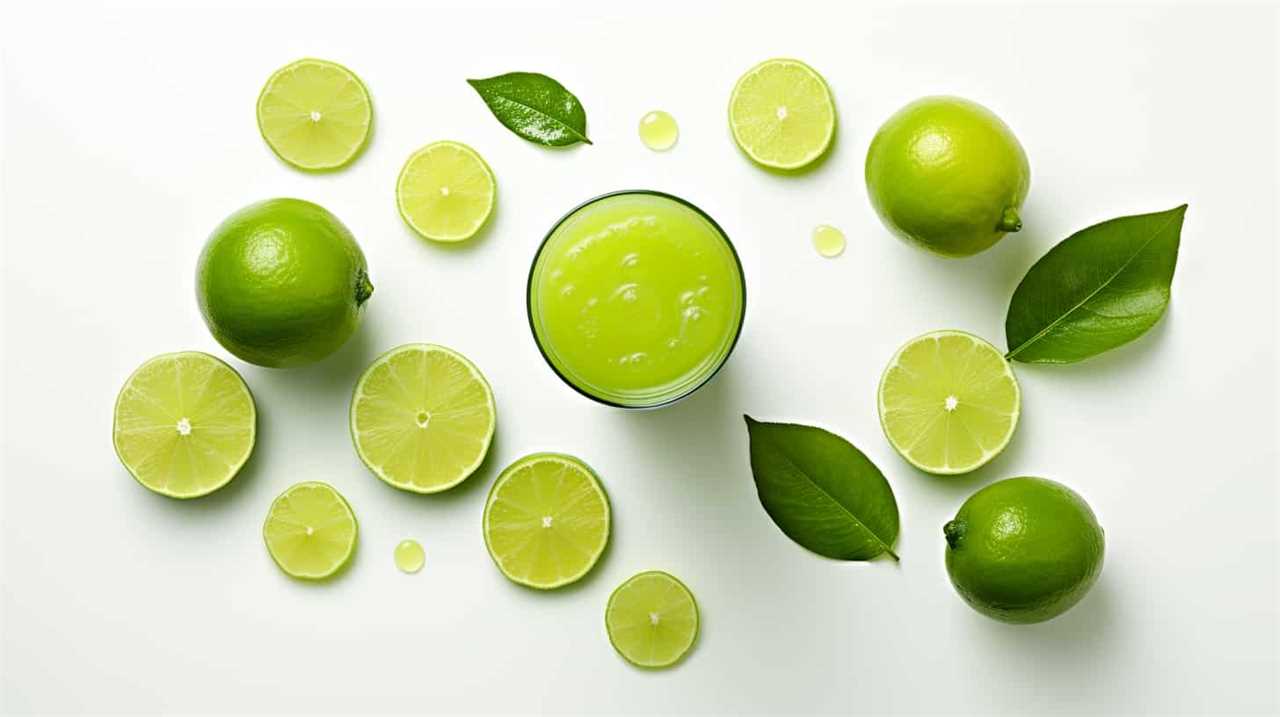
Key Takeaways
- Choose a reputable brand of aloe vera juice that prioritizes quality and uses organic, pure aloe vera.
- Avoid brands that contain added sugars or artificial ingredients.
- Use natural sweeteners like honey, agave syrup, or stevia to enhance the taste of aloe vera juice.
- Experiment with adding fruits, herbs, and other juices to create unique flavor combinations and enhance the health benefits of aloe vera juice.
Choosing the Right Aloe Vera Juice
We can enhance our experience with aloe vera juice by selecting the right brand and type for our preferences. When it comes to finding a reputable brand, it’s important to do some research and read reviews from other consumers. Look for brands that prioritize quality and use organic, pure aloe vera without any added sugars or artificial ingredients. Understanding the health benefits of aloe vera juice is also crucial in making the right choice. Aloe vera is known for its soothing properties, aiding digestion, promoting skin health, and boosting the immune system. By choosing a high-quality brand, we can ensure that we’re getting the maximum benefits from our aloe vera juice.
Now that we know how to choose the right brand, let’s move on to the next step of adding natural sweeteners.
Adding Natural Sweeteners
To enhance the flavor of our aloe vera juice, we can add natural sweeteners such as honey or agave syrup. Using alternative sweeteners not only adds sweetness but also brings unique flavors to the juice. Here are some options to consider:
- Stevia: A natural sweetener derived from the Stevia plant, it’s a zero-calorie alternative to sugar.
- Maple Syrup: This natural sweetener adds a rich and earthy flavor to the aloe vera juice.
- Dates: Pureed dates can be used to sweeten the juice while also providing essential nutrients like fiber.
In addition to using alternative sweeteners, we can enhance the flavor of aloe vera juice by adding spices and extracts. Cinnamon, ginger, or vanilla extract can add warmth and depth to the taste. By experimenting with different combinations of these natural sweeteners, spices, and extracts, we can create a flavor profile that suits our preferences.

Now, let’s move on to the next section and learn how to infuse aloe vera juice with fruits and herbs to further enhance its taste.
Infusing With Fruits and Herbs
As we explore ways to make our aloe vera juice taste better, one option to consider is infusing it with fruits and herbs. Creating unique aloe vera blends by adding fruits and herbs not only enhances the flavor but also adds a touch of freshness and complexity to the juice. For example, combining aloe vera juice with lemon, mint, or berries can create a refreshing drink that’s both delicious and packed with additional nutrients. It’s similar to the ease of making lemonade with bottled juice—quick, convenient, and customizable to suit your preferences. By experimenting with different fruit and herb combinations, you can elevate your aloe vera juice experience while still reaping its health benefits.
Fruits like strawberries, pineapple, or citrus can add a burst of sweetness, while herbs like mint, basil, or ginger can provide a subtle yet refreshing twist. Exploring the benefits of herbal infusions can also be beneficial for our health. For example, adding a few sprigs of lavender can promote relaxation and reduce stress. Additionally, infusing aloe vera juice with rosemary can aid digestion and boost the immune system.
Blending With Other Juices
Let’s try mixing aloe vera juice with different fruit juices to create delicious and refreshing blends. Blending aloe vera juice with other fruits not only enhances its taste but also adds nutritional benefits to your drink. Here are three fruit juices that you can mix with aloe vera juice:

- Orange juice: Combining aloe vera juice with orange juice not only adds a tangy flavor but also boosts your intake of vitamin C, which is essential for a strong immune system.
- Pineapple juice: Mixing aloe vera juice with pineapple juice creates a tropical blend that isn’t only refreshing but also helps in digestion. Pineapple contains bromelain, an enzyme that aids in breaking down proteins and promoting better digestion.
- Watermelon juice: Blending aloe vera juice with watermelon juice creates a hydrating and refreshing combination. Watermelon is rich in water content and contains electrolytes that can help replenish your body’s fluids.
Experimenting With Flavor Combinations
While we can try various flavor combinations with aloe vera juice, it’s important to find the right balance to enhance its taste. Experimenting with different flavors can’t only make the juice more enjoyable but also enhance its health benefits.
Aloe vera juice is known for its numerous health benefits, such as boosting digestion, promoting hydration, and supporting the immune system. By adding complementary flavors, we can create a refreshing summer drink that not only tastes great but also provides a nutritional boost.
Some popular flavor combinations include mixing aloe vera juice with citrus fruits like lemon or orange, adding a splash of coconut water for a tropical twist, or combining it with cucumber and mint for a refreshing and cooling effect.
Don’t be afraid to get creative and find the flavor combination that suits your taste buds best!
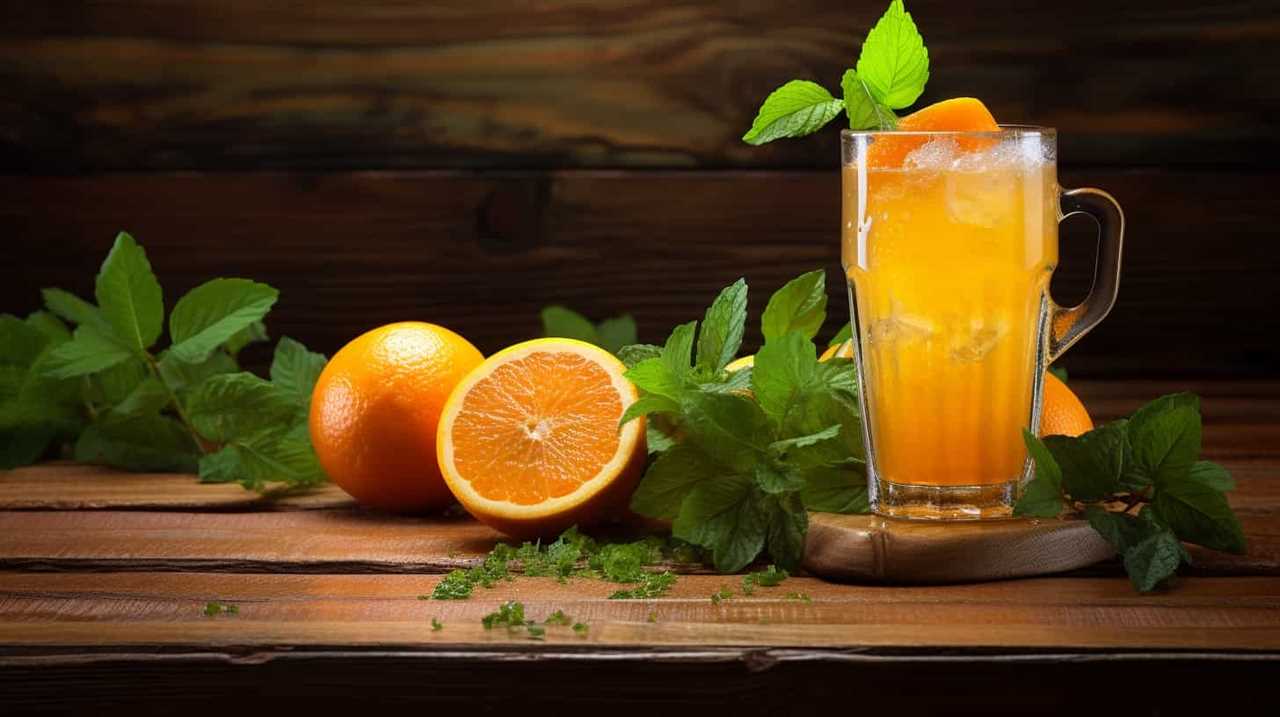
Frequently Asked Questions
Can I Use Store-Bought Aloe Vera Gel Instead of Fresh Aloe Vera for Making Juice?
Yes, you can use store-bought aloe vera gel instead of fresh aloe vera for making juice. However, it’s important to note that fresh aloe vera juice may have more health benefits due to its higher nutrient content.
How Long Can I Store Aloe Vera Juice in the Refrigerator?
Aloe vera juice can be stored in the refrigerator for up to a week. Refrigeration helps maintain the longevity and freshness of the juice, preserving its beneficial properties. It’s important to store the juice in an airtight container to prevent contamination and maintain its quality. Similarly, you might wonder *how long ginger juice lasts*; typically, fresh ginger juice can be refrigerated for about 1–2 weeks as well. Both aloe vera and ginger juices are best consumed within their shelf life to ensure maximum potency and health benefits. Additionally, freezing either juice can extend their shelf life, though some loss of nutrients and potency may occur during the process. When thinking about *how long fresh juice lasts*, it’s crucial to check for signs of spoilage, such as changes in smell, taste, or color, before consuming. To enjoy the best results, it’s always recommended to use fresh ingredients and properly store the juice to ensure you’re getting the most out of its health benefits.
Can Aloe Vera Juice Help With Digestive Issues?
Aloe vera juice can potentially help with digestive issues when taken in appropriate dosages. However, it is important to note that there may be potential side effects. It is always best to consult with a healthcare professional before starting any new supplement regimen.
Can I Use Artificial Sweeteners Instead of Natural Sweeteners in My Aloe Vera Juice?
Using artificial sweeteners in aloe vera juice may affect its taste and potential health benefits. However, natural sweeteners like honey or stevia can enhance the flavor without compromising its nutritional value.

Is It Safe to Drink Aloe Vera Juice Every Day?
Drinking aloe vera juice daily can have numerous benefits, such as improving digestion and boosting the immune system. However, consuming it regularly may also lead to potential side effects like diarrhea or stomach cramps.
Conclusion
In conclusion, making aloe vera juice taste better is easy and enjoyable.
By choosing the right aloe vera juice and adding natural sweeteners, infusing with fruits and herbs, blending with other juices, and experimenting with flavor combinations, you can create a delightful and refreshing drink.
So go ahead and unleash your creativity in the kitchen, and transform your aloe vera juice into a sensational elixir that will transport your taste buds to paradise.
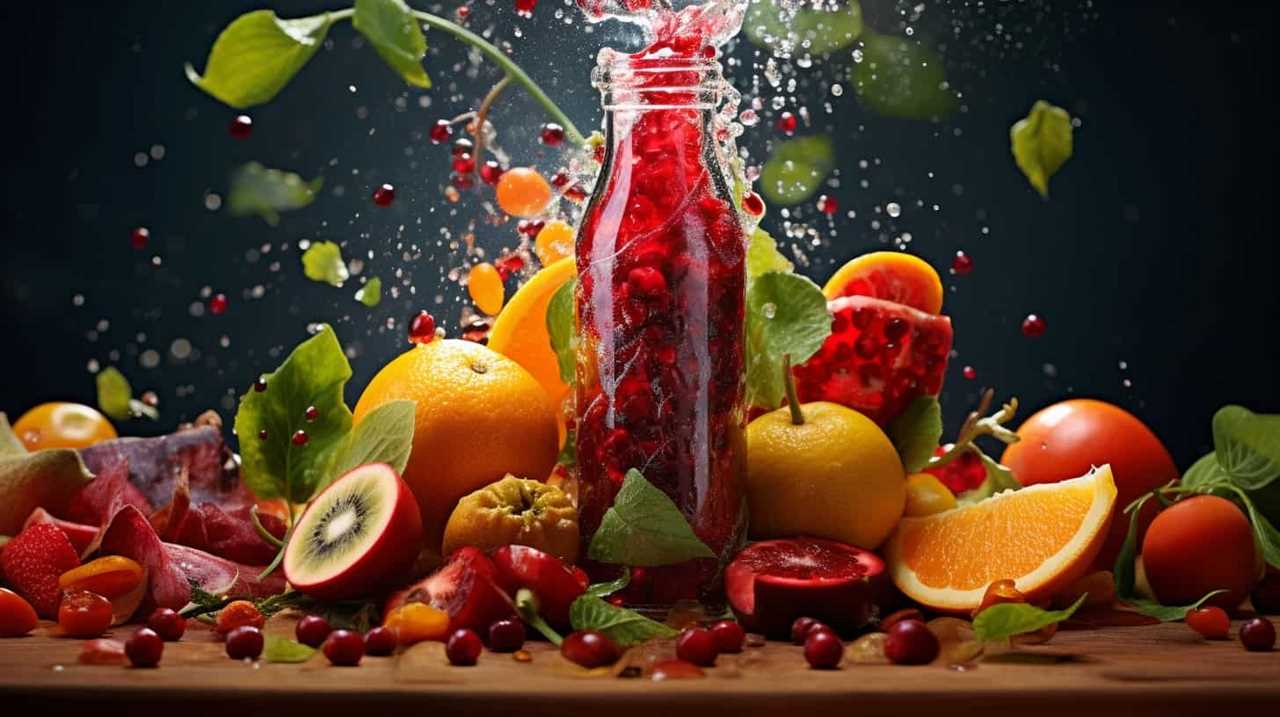
Susannah expertise lies in researching and compiling evidence-based content on juicing, nutrition, and overall health. She is committed to ensuring that The Juicery World offers accurate, up-to-date, and trustworthy information to empower readers to take control of their health. Susannah’s goal is to inspire individuals to embrace juicing as a way to nourish their bodies and live their best lives.
Juice Tips and Tricks
How to Make a Glass of Lemonade With Bottled Lemon Juice

Are you craving a cool glass of lemonade to quench your thirst? Look no further! Try out our perfect recipe using bottled lemon juice that will surely please your taste buds.
In this article, we’ll guide you through the process of creating a tangy and sweet concoction that will leave you feeling refreshed and satisfied.
So grab your ingredients and let’s get started on this delightful journey of serving ourselves and others a glass of pure lemony goodness.
Key Takeaways
- Consider the storage of the bottled lemon juice (dark glass or plastic bottles, protect from light exposure, check expiration date)
- Choose a suitable pitcher and fresh lemons for enhanced flavor
- Store the lemonade concentrate in the refrigerator to maintain freshness
- Adjust the sweetness and tartness to taste with sugar or more lemon juice, and experiment with different sweeteners or additional flavors.
Choosing the Right Bottled Lemon Juice
What are the key factors we should consider when selecting the right bottled lemon juice for our lemonade?

One important factor is how the lemon juice is stored. Look for bottles that are made of dark glass or plastic, as they help protect the juice from light exposure, which can degrade its quality. It’s also important to check the expiration date to ensure freshness.
Another benefit of using bottled lemon juice is convenience. It saves time and effort compared to squeezing fresh lemons. Additionally, bottled lemon juice provides consistent flavor, as the acidity levels are standardized.
When selecting a brand, consider reading reviews and checking for certifications, such as organic or non-GMO.
Gathering the Necessary Ingredients and Tools
How can we gather all the necessary ingredients and tools to make a glass of lemonade with bottled lemon juice? First, we’ll need to collect bottled lemon juice, sugar, and cold water, as well as a pitcher and a spoon for mixing. If you prefer extra flavor, you can also gather ice and optional add-ins like mint or soda water. While preparing the lemonade, it’s easy to understand why some people wonder about other citrus drinks and may ask, “how many oranges per gallon” are needed when making orange juice instead. Once everything is assembled, combine the lemon juice, sugar, and water in the pitcher, stirring until the sugar dissolves. Feel free to adjust the sweetness or tartness to your liking, and don’t forget to add ice or any optional add-ins for an extra refreshing touch. This process might even make you curious about how much juice from oranges is needed when making fresh orange juice compared to using bottled citrus products. Once your lemonade is ready, pour it into a glass and enjoy the refreshing taste. This simple recipe can inspire you to try other homemade juices, such as learning **how to make pear juice** or experimenting with other fruit combinations. Whether you’re using fresh fruits or bottled options, creating your own beverages is a fun and rewarding way to personalize your drinks.
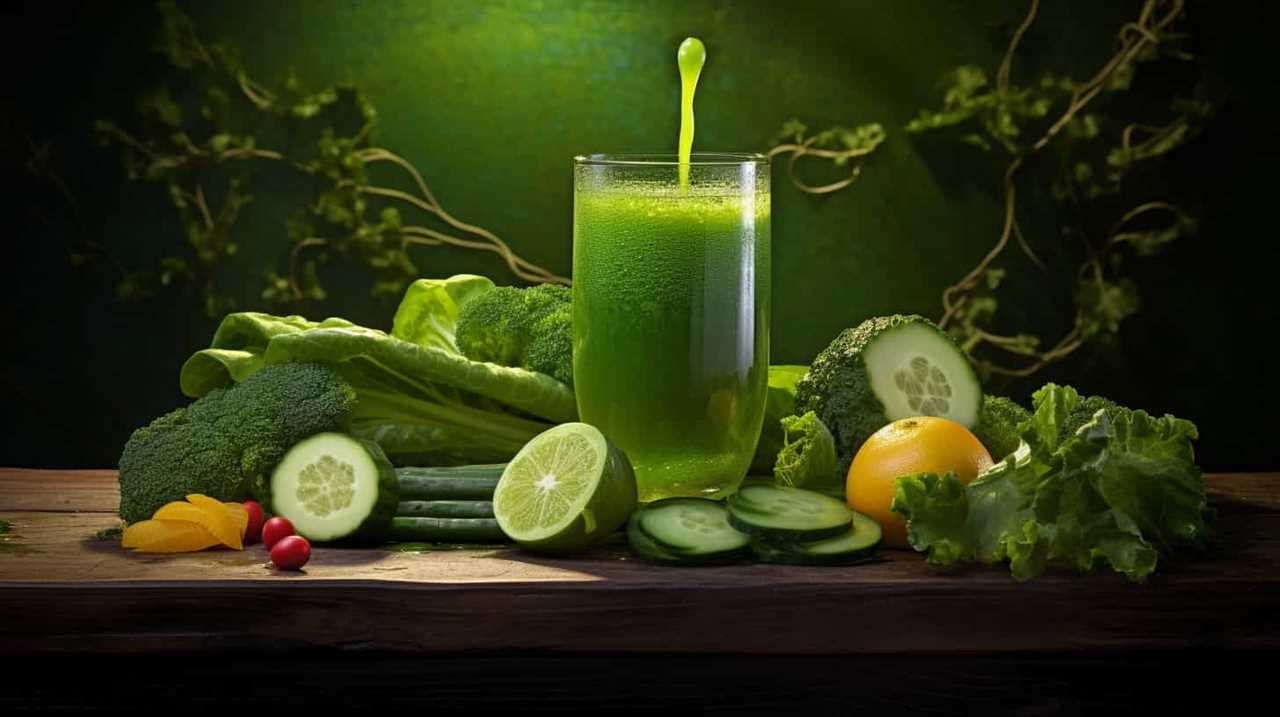
It’s important to start with the right pitcher. Look for a pitcher that’s made of glass or BPA-free plastic, as these materials won’t affect the taste of the lemonade. The pitcher should also have a lid or cover to keep the lemonade fresh and prevent spills.
Now, let’s talk about the lemons. While bottled lemon juice is convenient, using fresh lemons instead can elevate the flavor of your lemonade. Choose lemons that are firm and have a bright yellow color. Give them a gentle squeeze to ensure they’re juicy. To extract the juice, you’ll need a citrus juicer or a reamer. These tools make it easy to get every last drop of juice from the lemons.
Mixing the Lemonade Concentrate
To start mixing the lemonade concentrate, we’ll slowly pour the bottled lemon juice into the pitcher. It’s important to choose the right container for the lemonade concentrate. A pitcher with a lid or a tightly sealed container will help maintain the freshness and prevent any spills or leaks. Once the lemon juice is in the pitcher, we can move on to the next step of adding water and sweetener.
To ensure the lemonade concentrate stays fresh, it’s essential to store it properly. Keep the pitcher in the refrigerator to maintain its cool temperature and prevent any bacteria growth. If you have any leftover concentrate, transfer it to a smaller container with an airtight lid before refrigerating. This will help retain its flavor and prevent any contamination.
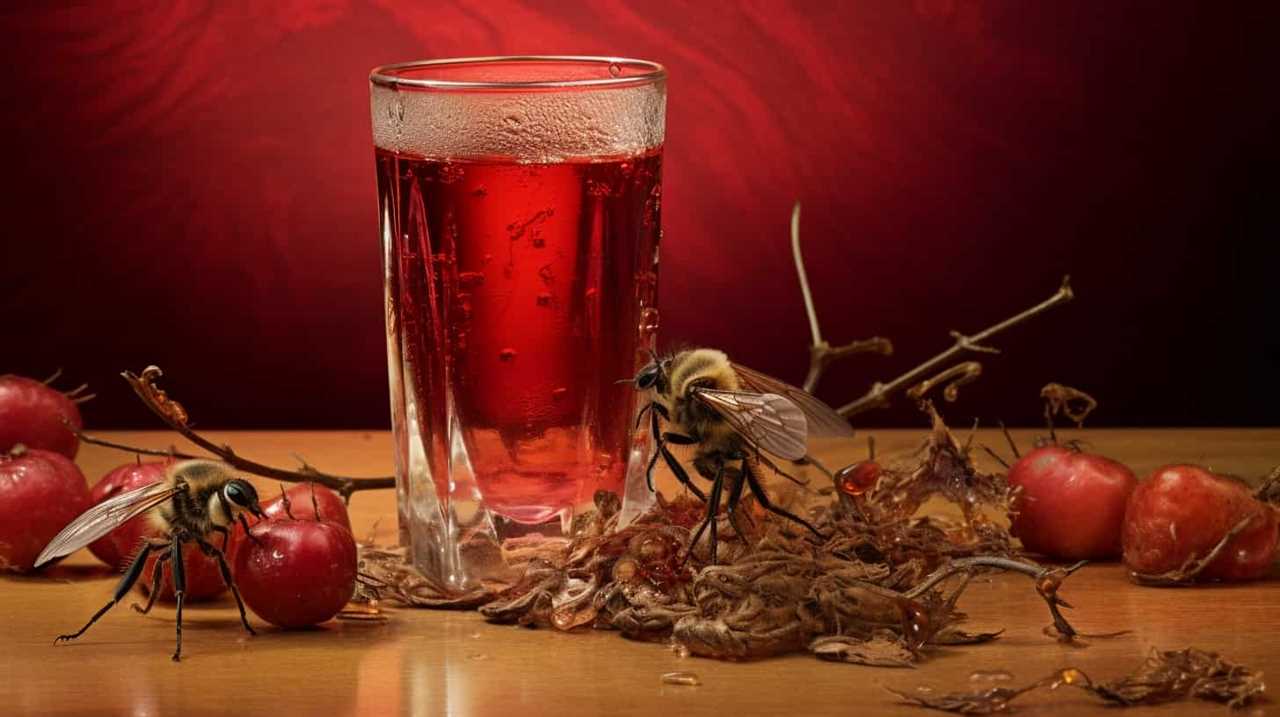
Now that we’ve mixed the lemonade concentrate, it’s time to adjust the sweetness and tartness to taste.
Adjusting the Sweetness and Tartness to Taste
We can adjust the sweetness and tartness of the lemonade to taste by adding more sugar or lemon juice, respectively. If you prefer a sweeter lemonade, simply add more sugar and stir until it dissolves completely. You can experiment with different sweeteners such as honey or agave syrup to find the perfect balance of sweetness.
On the other hand, if you want a tangier lemonade, add more lemon juice gradually, tasting as you go until it reaches your desired level of tartness.
Additionally, you can get creative with your lemonade by adding flavors like fresh mint leaves or a hint of lavender. These additions can elevate the flavor profile and create a more refreshing and unique experience.

Now that we’ve adjusted the sweetness and tartness of our lemonade, let’s move on to serving and enjoying your refreshing glass of lemonade.
Serving and Enjoying Your Refreshing Glass of Lemonade
Now let’s sit back, relax, and savor our refreshing glass of lemonade.
When it comes to serving and enjoying this delightful drink, there are a few techniques and garnishing options to consider.
Firstly, serving your lemonade chilled is essential for maximum enjoyment. Ensure that you have chilled glasses or add ice cubes to the glasses before pouring the lemonade.

To add a touch of elegance, you can garnish your lemonade with a slice of lemon on the rim of the glass. For an extra burst of flavor, you could also add a sprig of fresh mint or a few berries.
Remember to gently stir the lemonade before serving to evenly distribute the flavors.
Now, take a sip, feel the refreshing tang of lemon, and let the sweet and tart flavors dance on your taste buds.
Cheers!

Frequently Asked Questions
Can I Use Fresh Lemons Instead of Bottled Lemon Juice?
Fresh lemons offer numerous benefits over bottled lemon juice. The taste of fresh lemons is unparalleled, providing a vibrant and tangy flavor. Incorporating fresh lemons into your lemonade will elevate its taste and give it a refreshing and authentic twist.
Can I Substitute Sugar With a Different Sweetener?
Substituting sweeteners in lemonade can enhance the flavor and offer health benefits. We’re knowledgeable about alternative sweeteners and can provide precise, detailed instructions on using them in place of sugar.
How Long Does the Lemonade Concentrate Need to Chill in the Refrigerator?
The chilling time for the lemonade concentrate in the refrigerator is typically around 1-2 hours. Using bottled lemon juice offers the benefit of convenience and consistent flavor for a refreshing glass of lemonade.
Can I Add Other Fruits or Flavors to the Lemonade?
Sure, we can definitely add different fruits or flavors to our lemonade. It’s a great way to experiment with unique flavors and create refreshing, personalized drinks. The possibilities are endless!

How Long Does the Lemonade Stay Fresh in the Refrigerator?
Lemonade made with bottled lemon juice can stay fresh in the refrigerator for about 5-7 days. To maximize shelf life, store it in an airtight container and keep it chilled.
Conclusion
And so, with a few simple steps and the right ingredients, a glass of refreshing lemonade is born.
Like a symphony of flavors dancing on your taste buds, this tangy elixir quenches thirst and brings joy on a hot summer day.
Just a sip transports you to a world of citrusy delight, where the sweetness and tartness blend harmoniously.

So go ahead, indulge in the art of lemonade-making and savor every drop of this sun-kissed nectar.
Cheers to the perfect glass of lemonade!
Susannah expertise lies in researching and compiling evidence-based content on juicing, nutrition, and overall health. She is committed to ensuring that The Juicery World offers accurate, up-to-date, and trustworthy information to empower readers to take control of their health. Susannah’s goal is to inspire individuals to embrace juicing as a way to nourish their bodies and live their best lives.
Juice Tips and Tricks
How to Know if Orange Juice Is Bad

We’ve all been in that situation before – reaching for a glass of orange juice and hesitating, unsure if it’s still okay to drink. Fear not! This article will give you the knowledge you need to determine for sure if your orange juice is still fresh or if it’s gone bad.
With a blend of scientific precision and practical tips, we’ll explore color changes, strange smells, off taste, texture changes, and mold or growth that may indicate spoilage.
Let’s dive in and serve ourselves a refreshing glass of certainty!
Key Takeaways
- Color changes in orange juice can indicate a loss of freshness and shelf life extension, but it doesn’t necessarily mean the juice is bad.
- Unusual or off-putting odors in orange juice, such as sour or fermented scents, can be a sign of poor quality.
- An off taste in orange juice, such as sour, bitter, or fermented flavors, suggests that the juice is spoiled.
- Texture changes in orange juice, such as pulp separation or a thicker consistency, can occur as the juice ages, so it’s important to consume it before the expiration date.
Color Changes in Orange Juice
We should be aware that color changes can indicate whether orange juice is bad.

When it comes to orange juice, color is a crucial factor to consider. As oranges are exposed to air, an oxidation process occurs, which leads to changes in color. Fresh orange juice has a vibrant orange hue, indicating its freshness and high nutritional value.
However, as time passes, the juice may undergo a color change, turning dull or brownish. This change in color is a result of the oxidation process, which affects the flavor and quality of the juice. It’s important to note that while a change in color doesn’t necessarily mean the juice is bad, it does indicate that the juice is losing its freshness and shelf life extension.
Therefore, it’s advisable to consume orange juice when it’s at its freshest, as indicated by its vibrant orange color.
Strange Smells in Orange Juice
When it comes to evaluating orange juice, we should be cautious of any strange smells or odors. A fresh, pleasant smell is indicative of good quality orange juice. However, if you notice any unusual or off-putting odors, it may be a sign that the juice has gone bad. These smells can range from a sour or fermented scent to a rancid or moldy aroma.
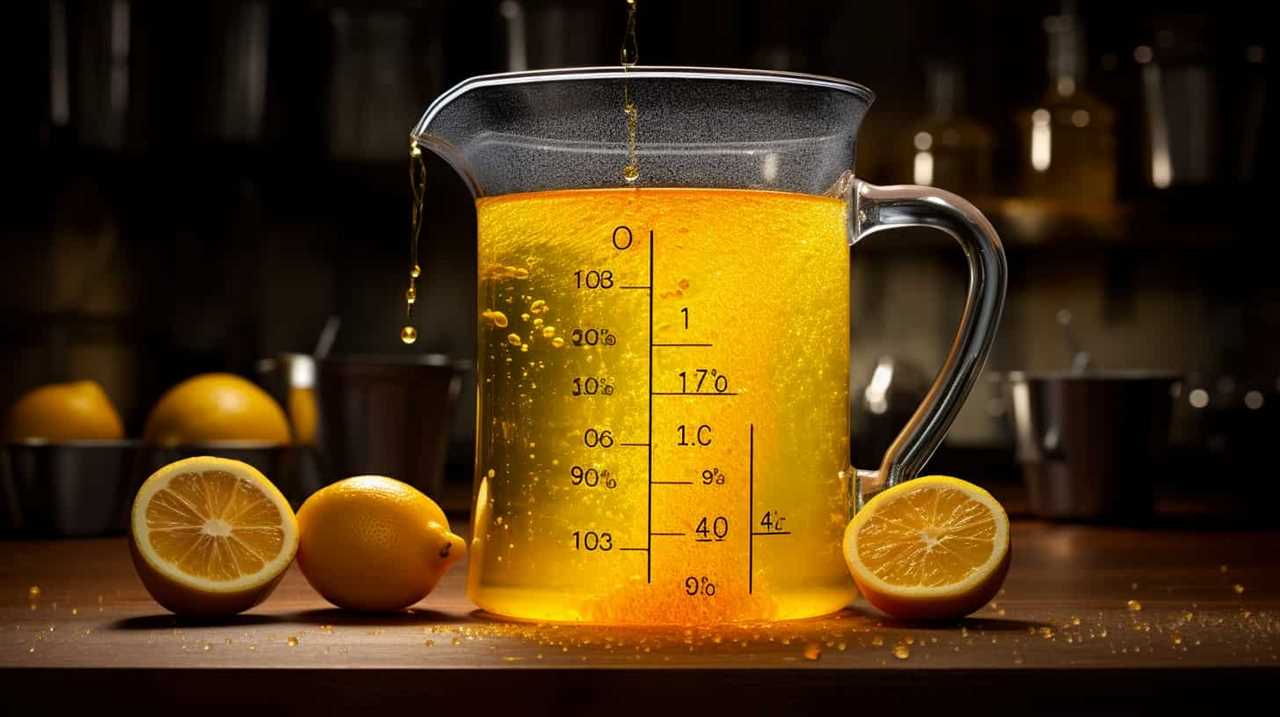
It’s important to note that while some natural variations in scent can occur due to the specific variety of oranges used, any strong or unpleasant smells should raise concerns. If you have citrus fruit allergies, it’s especially important to pay attention to the smell of orange juice, as it could indicate the presence of spoilage or contamination.
Ensuring the quality of orange juice is essential as it’s a popular beverage known for its health benefits, including being rich in vitamin C and antioxidants.
Off Taste of Orange Juice
Our taste buds can detect even the slightest hint of an off taste in orange juice, which can indicate that it has gone bad. The taste of orange juice should be fresh, tangy, and slightly sweet. If it tastes sour, bitter, or fermented, it’s likely spoiled.
One common cause of an off taste in orange juice is the use of overripe oranges. When oranges become overripe, their flavor profile changes, resulting in a less pleasant taste. Another factor to consider is the expiration date. Orange juice that has passed its expiration date is more likely to develop an off taste. It’s important to check the expiration date before consuming orange juice to ensure its freshness and quality. Additionally, improper storage conditions, such as leaving the juice at room temperature for extended periods, can lead to the development of unpleasant flavors. Storing orange juice in the refrigerator helps maintain its freshness for longer. For those exploring different juice options, aloe vera juice flavor tips suggest pairing tart juices with milder flavors to balance the overall taste.
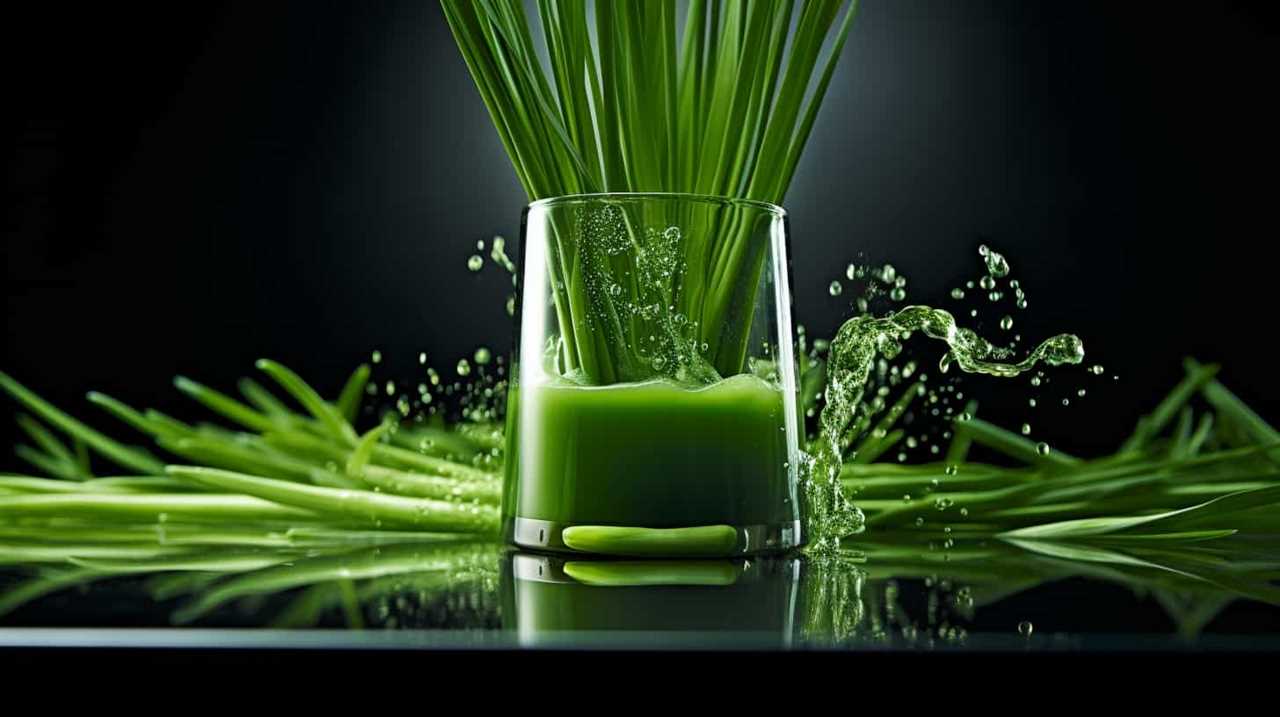
Now, let’s move on to discuss the texture changes in orange juice.
Texture Changes in Orange Juice
As we explore the texture changes in orange juice, it’s important to note that certain factors can cause it to become thicker or develop sediment. One common texture change in orange juice is pulp separation, where the pulp separates from the liquid and settles at the bottom. This can occur naturally over time, as the pulp particles become denser and sink.
Another factor that can affect the texture of orange juice is the expiration date. As orange juice ages, it may start to develop a thicker consistency and even form sediment. This is a result of the natural breakdown of the juice’s components. Therefore, it’s crucial to check the expiration date on orange juice and consume it before it reaches its expiration date to avoid any undesirable texture changes.
Mold or Growth in Orange Juice
We need to be aware of the possibility of mold or other growth occurring in orange juice. Mold can develop in orange juice if it isn’t stored properly or if it has passed its expiration date.

To prevent mold growth, it’s important to follow these steps:
- Store orange juice in the refrigerator at a temperature below 40°F (4°C).
- Check the expiration date on the bottle before consuming. Discard any orange juice that has expired.
- Keep the container tightly sealed to prevent air and moisture from entering, as these can promote mold growth.
Regularly inspecting orange juice for any signs of mold or unusual growth is essential. If you notice any discoloration, a strange odor, or visible mold, it’s best to discard the juice to avoid any potential health risks.
Frequently Asked Questions
Can Orange Juice Go Bad if It’s Stored in the Freezer for Too Long?
Frozen orange juice can potentially lose its nutrients and change its taste if stored in the freezer for too long. It is important to check for signs of spoilage before consuming it.
How Long Can Orange Juice Stay Fresh in the Refrigerator Once It’s Opened?
Once opened, orange juice can stay fresh in the refrigerator for about 7-10 days. To maintain its freshness, store it properly by keeping it tightly sealed and at a consistently cold temperature. If the orange juice develops an off odor, flavor, or appearance, it’s best to discard it to avoid any potential health risks. Factors like exposure to air and varying temperatures can influence how long orange juice lasts, so it’s crucial to handle it with care. Always check the expiration date as a general guide, but remember that proper storage can extend its freshness slightly. Additionally, avoid leaving the orange juice out at room temperature for extended periods, as this can significantly shorten how long orange juice lasts. Freezing the juice can be another option to extend its shelf life, but be aware that this may alter its texture and taste once thawed. By following these precautions, you can ensure your orange juice stays fresh and safe to consume.
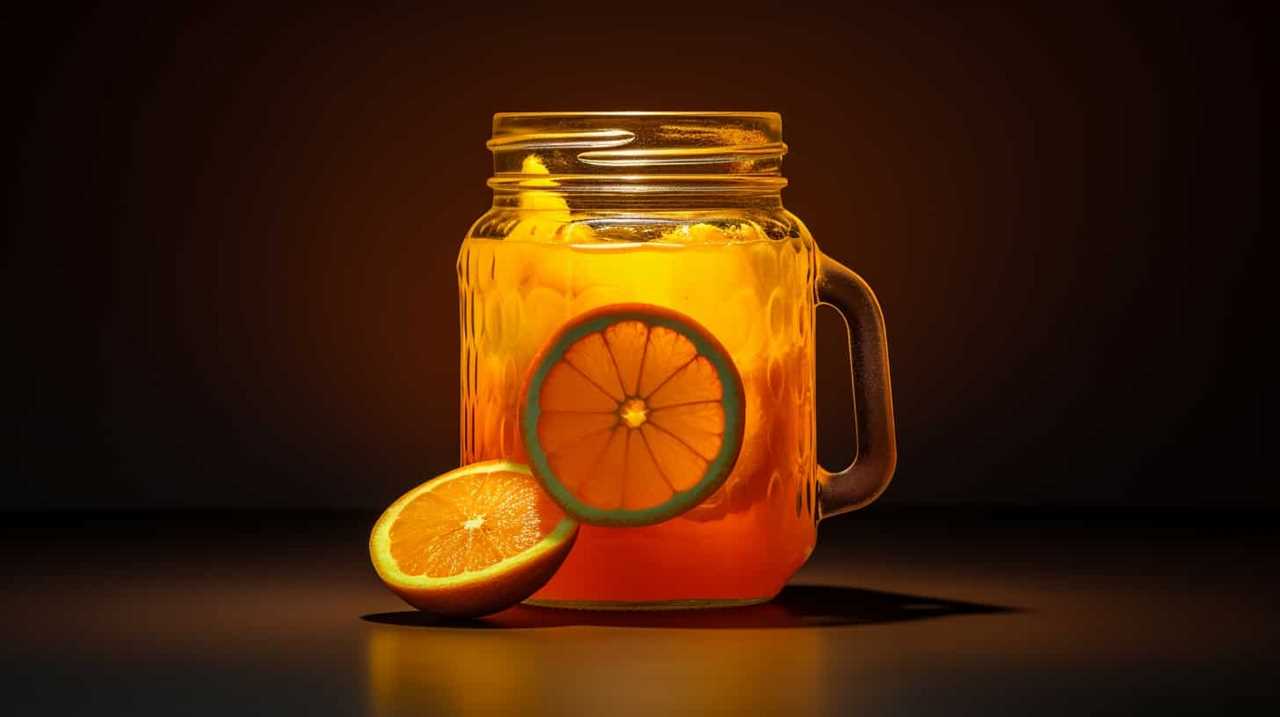
Is It Safe to Consume Orange Juice That Has Been Left Out at Room Temperature Overnight?
Left out orange juice may not be safe to drink as it can harbor harmful bacteria. Signs of spoiled orange juice include a sour smell, mold growth, and a change in color or taste.
Can Orange Juice Develop Harmful Bacteria if It’s Past Its Expiration Date but Still Looks and Smells Fine?
Orange juice can cause food poisoning if it develops harmful bacteria, even if it looks and smells fine. Signs of spoiled orange juice include a sour smell, mold growth, and a change in color or taste.
Does the Nutritional Value of Orange Juice Decrease as It Starts to Go Bad?
As orange juice goes bad, its nutritional value decreases. The longer it sits on the shelf, the more nutrients it loses. Signs of spoilage include a sour smell, off taste, and mold growth.
Conclusion
In conclusion, determining if orange juice is bad requires careful observation of color changes, strange smells, off taste, and texture changes. Just like a detective investigating a case, we must rely on our senses to detect any signs of spoilage.
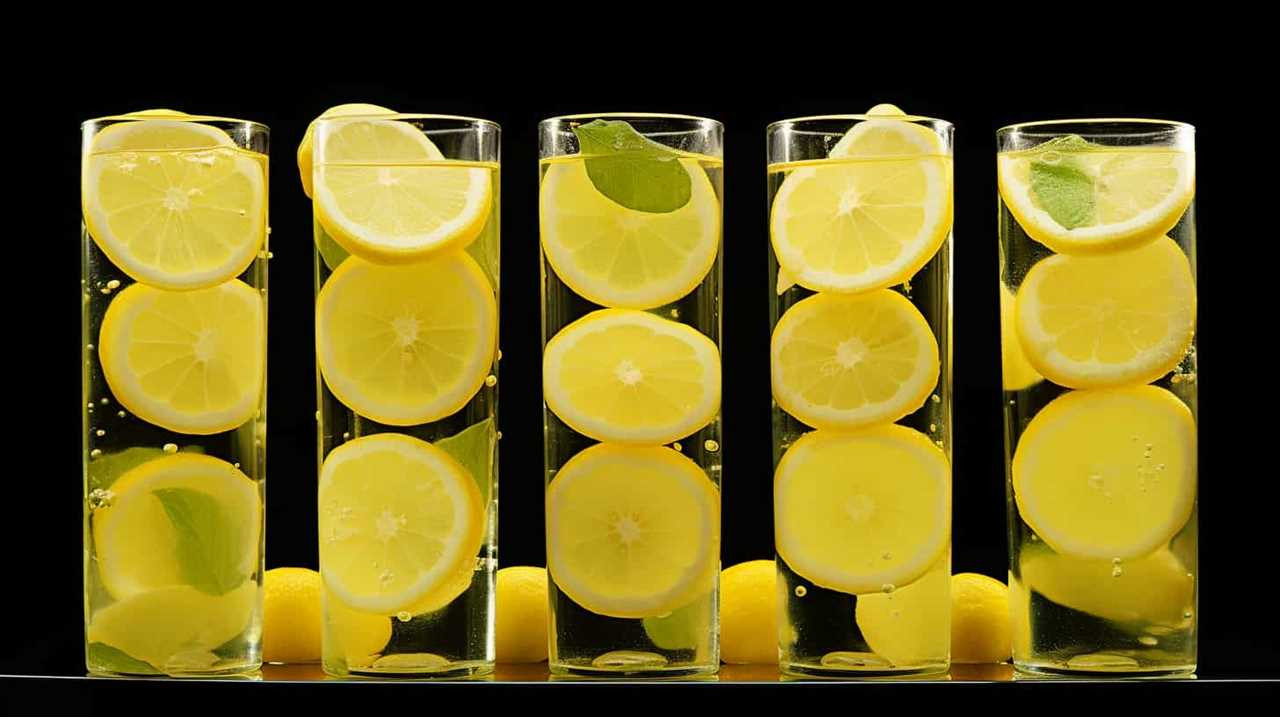
If we detect mold or growth in the orange juice, it’s a clear indication that it’s no longer safe to consume. By remaining vigilant and attuned to these indicators, we can ensure that our orange juice is always fresh and enjoyable.
Susannah expertise lies in researching and compiling evidence-based content on juicing, nutrition, and overall health. She is committed to ensuring that The Juicery World offers accurate, up-to-date, and trustworthy information to empower readers to take control of their health. Susannah’s goal is to inspire individuals to embrace juicing as a way to nourish their bodies and live their best lives.
-

 Vetted2 months ago
Vetted2 months ago15 Best Juices for Diabetics: Refreshing Options That Won’t Spike Your Blood Sugar
-

 Vetted2 months ago
Vetted2 months ago15 Best Decaf Coffee Options for Flavor Lovers Who Need a Caffeine Break
-

 Vetted2 months ago
Vetted2 months ago15 Best Espresso Ground Coffees to Elevate Your Morning Brew
-

 Vetted2 months ago
Vetted2 months ago15 Best K-Cup Coffee Pods for a Perfect Brew Every Time
-

 Vetted2 months ago
Vetted2 months ago15 Best Beans for Espresso: A Guide to Perfecting Your Brew
-

 Vetted2 months ago
Vetted2 months ago15 Best Kona Coffees to Savor the Rich Flavors of Hawaii
-

 Vetted2 months ago
Vetted2 months ago15 Best Inexpensive Espresso Machines That Brew Quality Coffee on a Budget
-

 Vetted2 months ago
Vetted2 months ago15 Best Cold Brew Coffees to Keep You Refreshed All Summer Long



